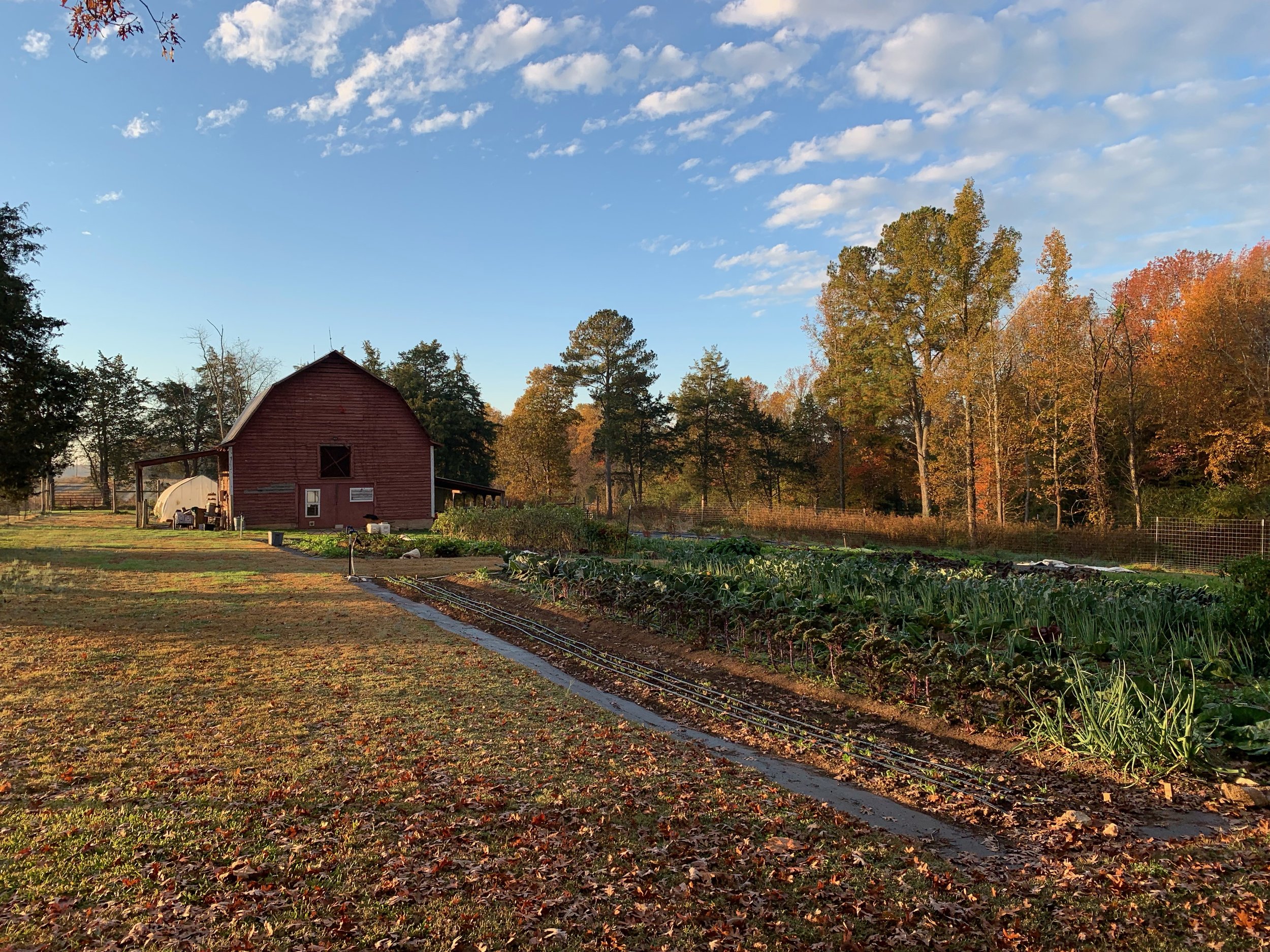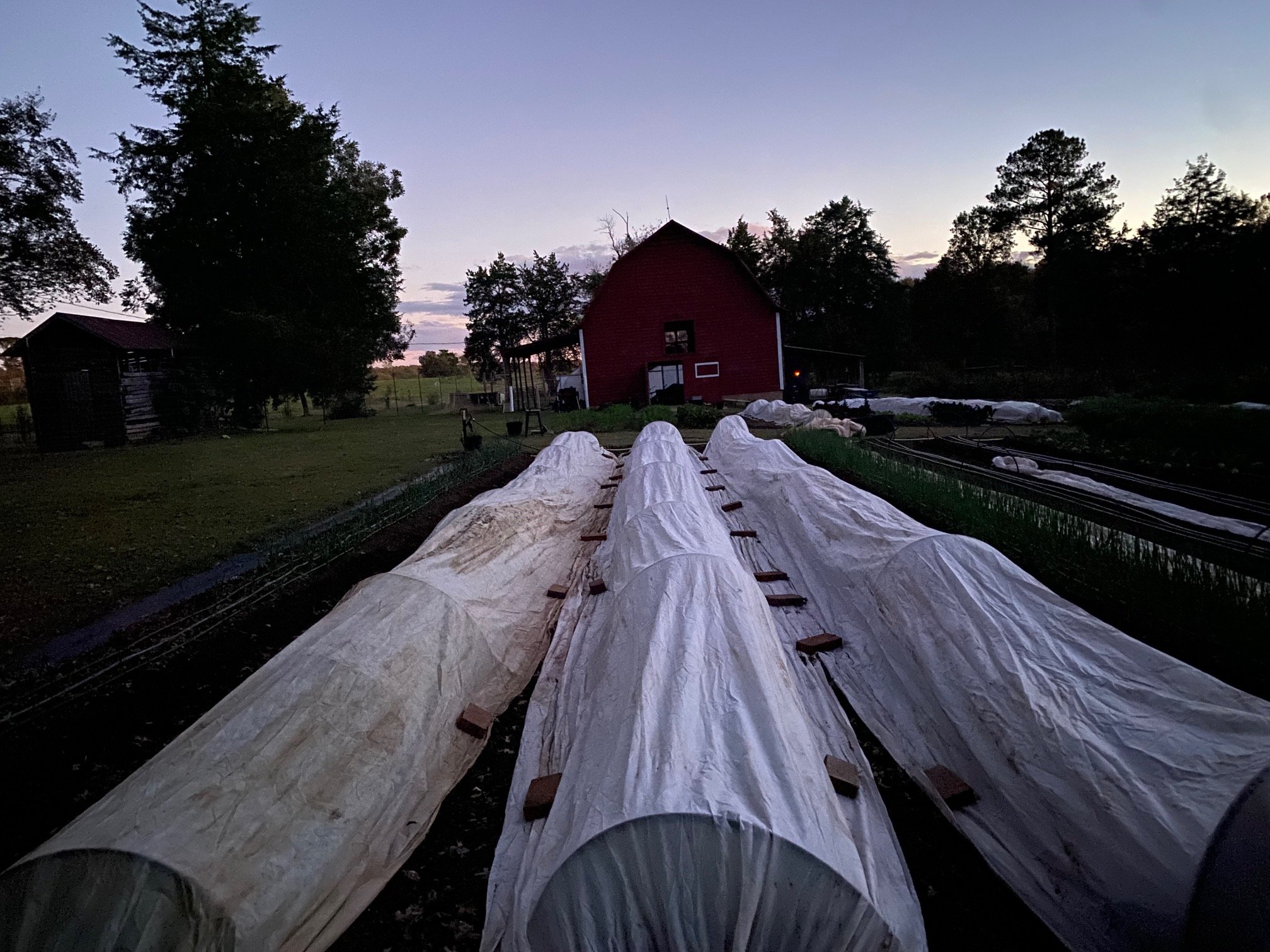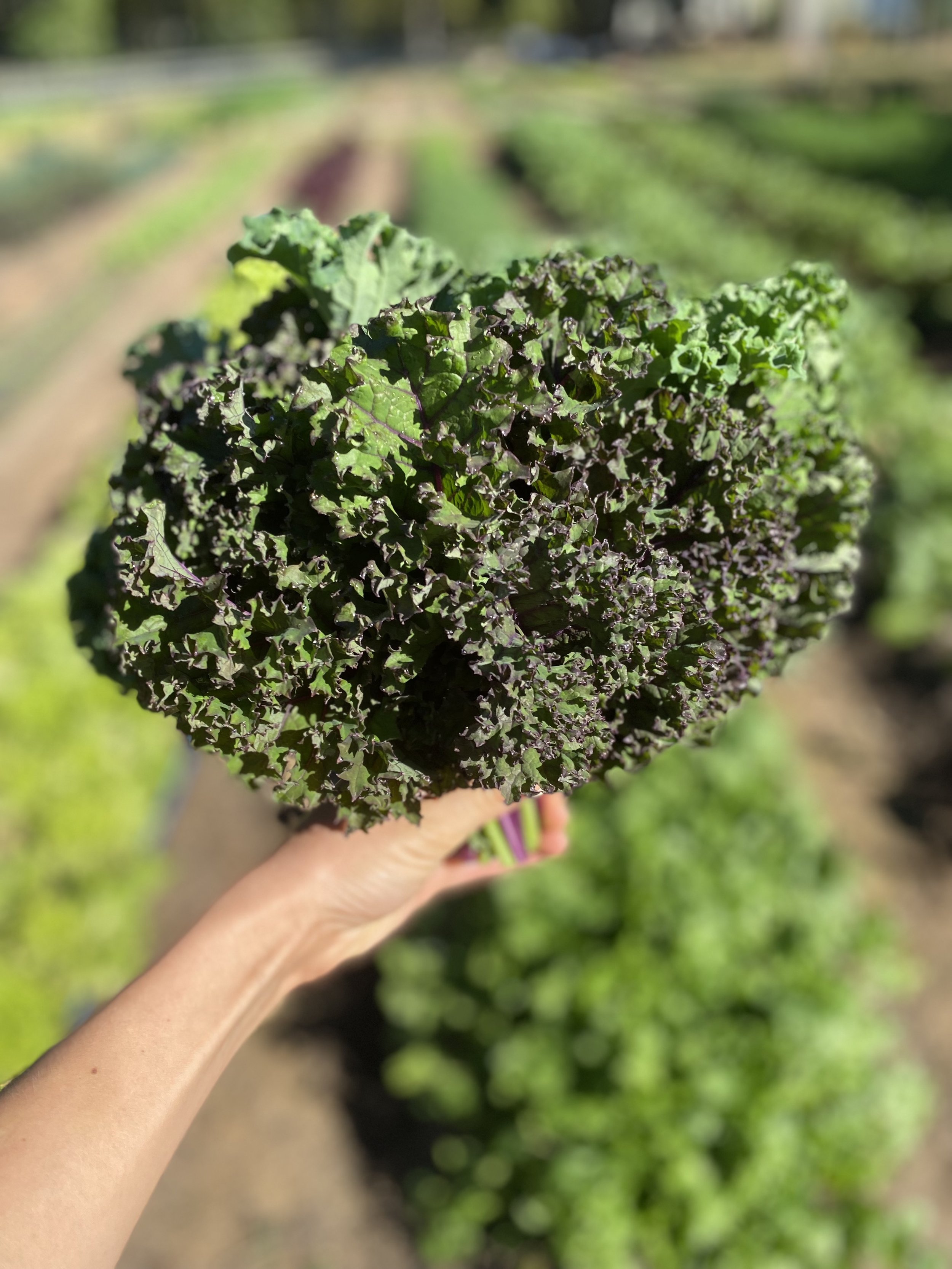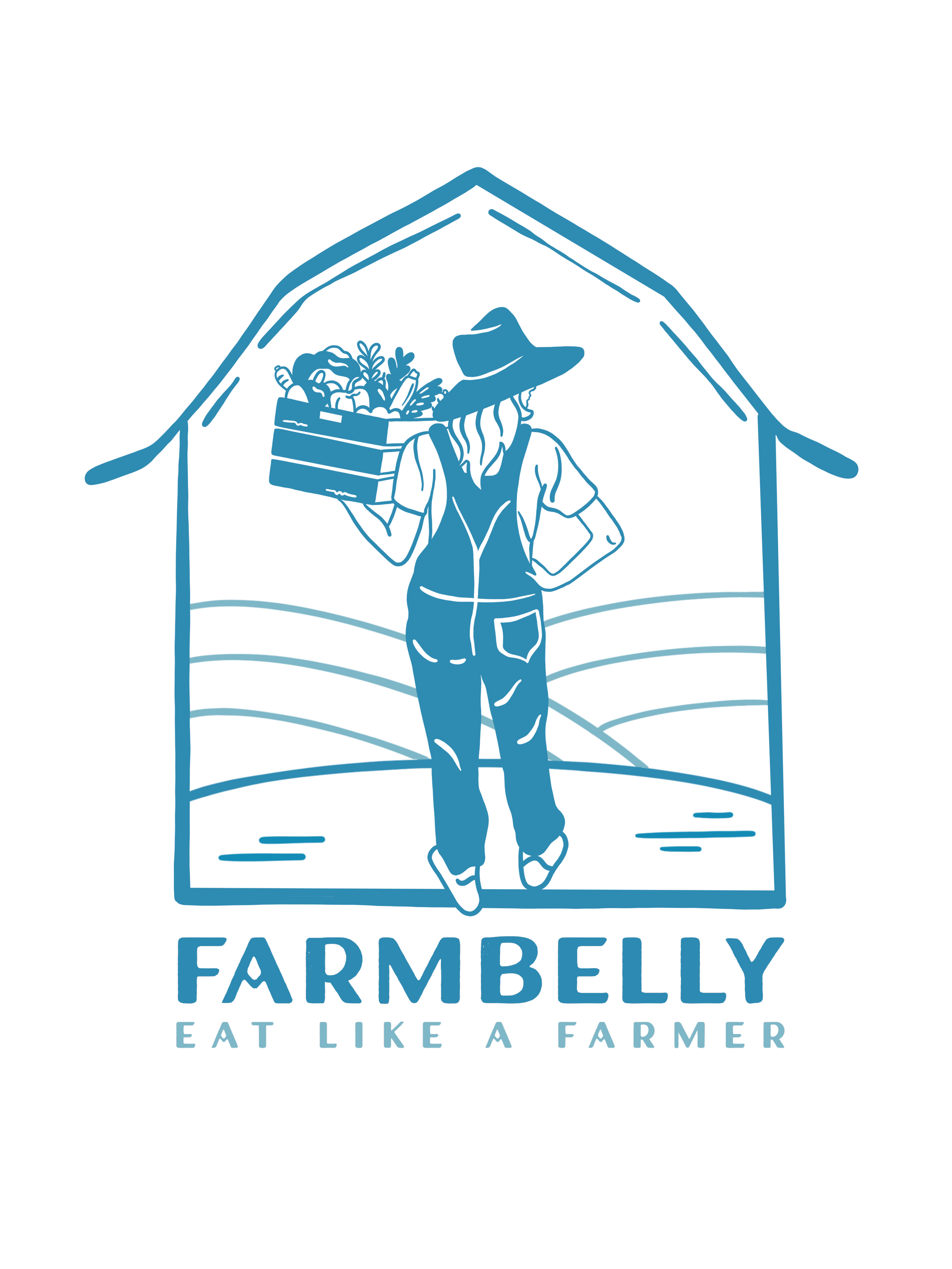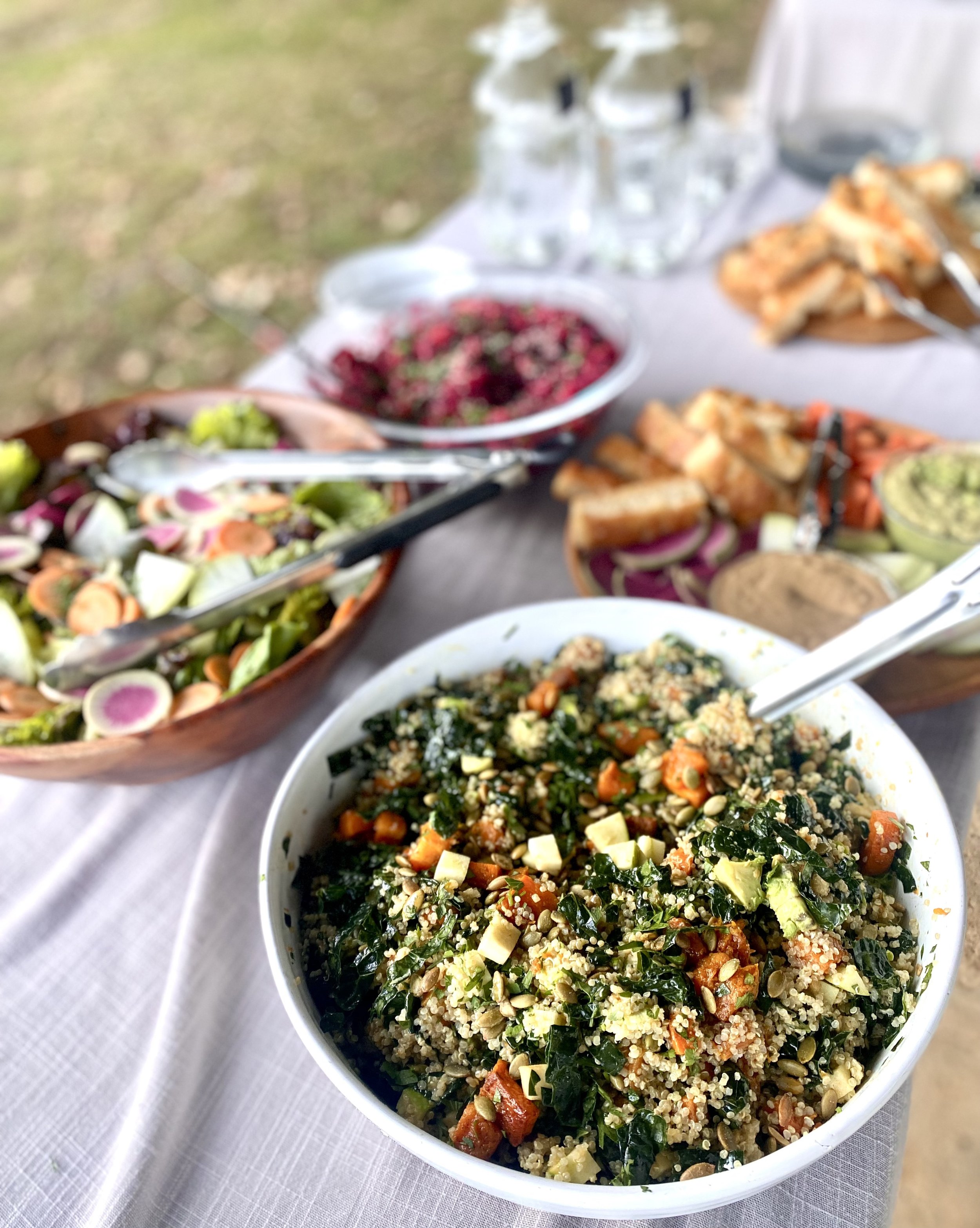Farm Notes
It feels like #peakfall around here, and I for one am loving it. Every year when fall rolls around, I’m like… give me all the sweaters, all the pumpkin spiced lattes, all the leaf piles, all the hearty soups, all the root veggies! Especially after a long and tiring (but still wonderful) summer, this time of year I can feel myself start to relax, take a breath, and even sleep in a bit (as much as one can with a toddler)…
After planting a few more successions of lettuce, asian greens, radishes, arugula, and baby kale over the past week, I can officially say that we are finished planting for the 2022 season! As this point, we (fingers crossed) should be able to cruise through the last 4 weeks of our fall CSA, which goes through the week of Thanksgiving.
Planting garlic into landscape fabric for weed control
But just as we finish planting for this season, it’s already time to start planting some of our crops for next year! Today I’m going to dig into all things garlic, because now is a great time to get your cloves in the ground. My rule of thumb for most climates around the US is to try and plant garlic between Halloween and Thanksgiving (you don’t want the ground to be so cold that it is frozen, but you also don’t want to plant the garlic too early, and risk getting too much growth too soon, which could get nipped and damaged by frigid winter temperatures).
To help control weeds over garlic’s long growing season (it won’t get harvested until next June) we plant them into landscape fabric – though you definitely don’t need to do that if you’re just growing a small amount of garlic in your home garden.
TYPES OF GARLIC
Hardneck garlic produce a stiff stem that grows up through the center of the bulb. Compared to softneck varieties, they have a sharper flavor, with more variation in flavor among the varieties. They are also hardier than softneck, so they are the best option for growing in cold climates. This is the variety that produces garlic scapes that need to be pulled (and then enjoyed!) in early summer before the garlic is harvested.
Softneck garlic don't produce a stiff central stem. Softneck garlic is the best choice for regions with mild winters, it has a more mild flavor than hardneck garlic, and it's the type to grow if you want to make garlic braids.
Elephant garlic resembles a giant head of garlic and, indeed, it does belong to the same genus, Allium. However, it isn't a "true" garlic but rather is more closely related to the leek.
Head of garlic
Garlic cloves
HOW TO PLANT GARLIC
Plan to plant garlic in the fall, ideally between Halloween and Thanksgiving
Prepare your soil by loosening it with a fork/broadfork, and work in a good amount of compost into the bed. Garlic is a “heavy feeder” and requires a lot of nutrients, so having good quality soil is important to get a good crop.
Purchase garlic seed from your local farm/garden store (not the supermarket)! Just prior to planting, break up the garlic heads into individual cloves, leaving as much of the papery covering on each clove intact as possible.
Plant cloves 3"-4" deep and 4”-6” apart, orienting them so the pointy ends face up and root end is pointing down.
Water gently to settle the soil, and then cover the bed with a 4" to 6" layer of leaves or straw. You will likely see some green shoots starting to grow before the end of the year, which is great! They will really start to take off in the spring.
PS – I just took y'all on a virtual walk around the farm! It's a gorgeous day around here, and to see everything that's happening + get some tips for your gardens, you can tune in here.
PS – On a totally non-farming related note… an encouragement to everyone to put your civic duty to practice and VOTE! I voted early yesterday, and was in and out of my polling station in 5 minutes... it couldn’t be easier to make your voice heard! Folks in NC can find out your local polling station options here.
Kitchen Notes
Because I love any excuse for carrots and crispy chickpeas and herbs and a yummy tahini vinaigrette… here’s a delish salad/side recipe that is chock-full of awesome autumnal vibes. It may look like a lot of ingredients, but I promise they are all ones you (most likely) already have in your pantry/fridge, and this dish comes together super easily + keeps super well in the fridge (though the chickpeas get a little less crispy). This recipe is adapted from the always wonderful Deb Perelman, of Smitten Kitchen.
SHAVED CARROT SALAD WITH TAHINI, CRISPY CHICKPEAS AND FRESH HERBS
INGREDIENTS
Roasted Chickpeas
1 15-ounce can chickpeas, drained and patted dry on paper towels
1 tablespoon olive oil
1/2 teaspoon coarse sea salt
1/2 teaspoon ground cumin
1/2 teaspoon paprika
Salad
2 pounds carrots, peeled and coarsely grated
1/2 cup roughly chopped fresh parsley
1/2 cup shelled, salted pistachios, coarsely chopped
Tahini Dressing
1 large garlic clove, minced
1/3 cup lemon juice
1/3 cup well-stirred tahini
3 tablespoons olive oil
2-4 tablespoons water, plus more if needed
Salt and red pepper flakes to taste
PREPARATION
Roast chickpeas: Heat oven to 425 degrees F. Toss chickpeas with one tablespoon olive oil, salt, cumin and paprika until they’re all coated. Spread them on a baking sheet or pan and roast them in the oven until they’re browned and crisp. This can take anywhere from 15 to 20 minutes, depending on the size and firmness of your chickpeas. Toss them occasionally to make sure they’re toasting evenly. Set aside until needed.
Prep the salad: Grate the carrots, chop the parsley and pistachios, and combine in a bowl.
Make the dressing: Combine ingredients together in a jar and shake until well combined, adding more water if needed to thin the dressing slightly. Taste and adjust seasoning – don’t worry if it tastes a little sharp on the lemon, it will marry perfectly with the sweet grated carrots.
Assemble salad: Add the roasted chickpeas to the bowl of grated carrots, parsley, and pistachios. Mix in the dressing and stir gently to combine. Taste and adjust seasoning (adding more salt, lemon juice, etc) as needed. To serve, sprinkle with additional pistachios and parsley.
Today’s Stats
Low temp: 44F
High temp: 60F
Sunrise: 7:36am
Sunset: 6:25pm
Moon phase: Waxing crescent
Additional notes: Mostly sunny

